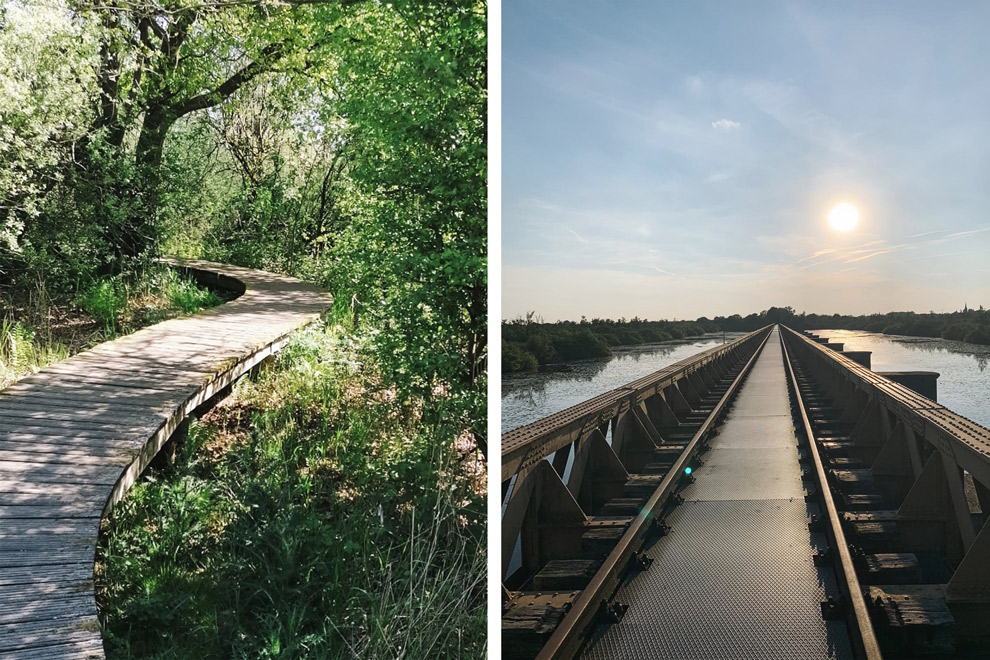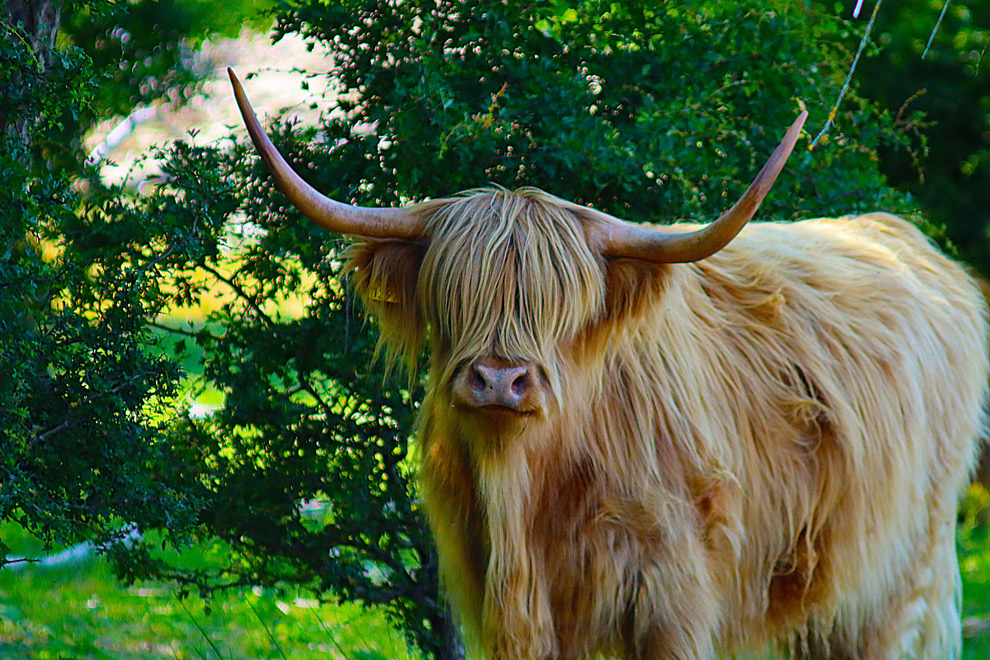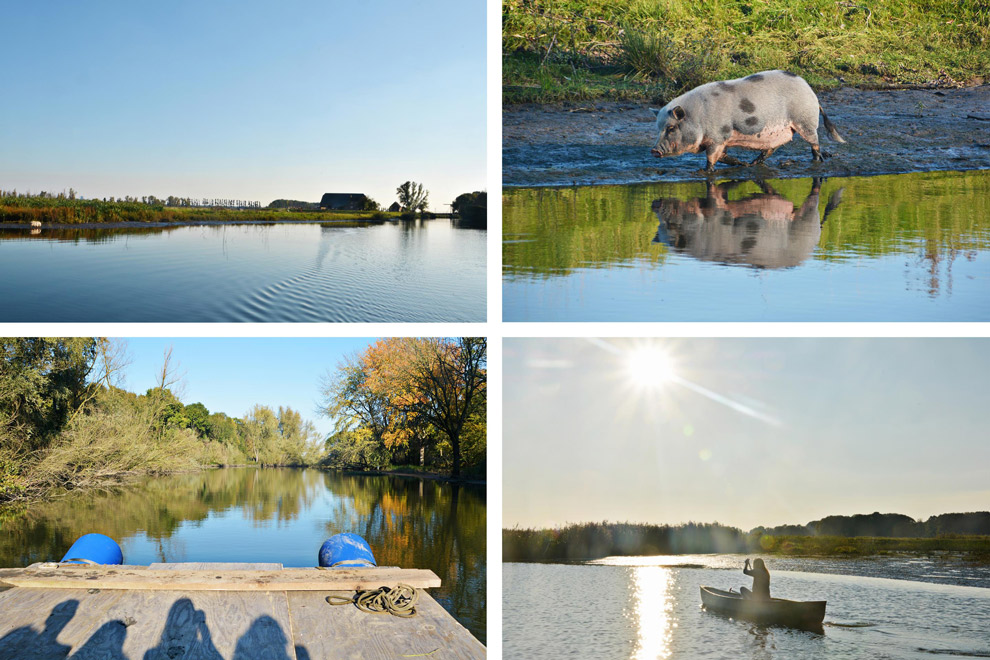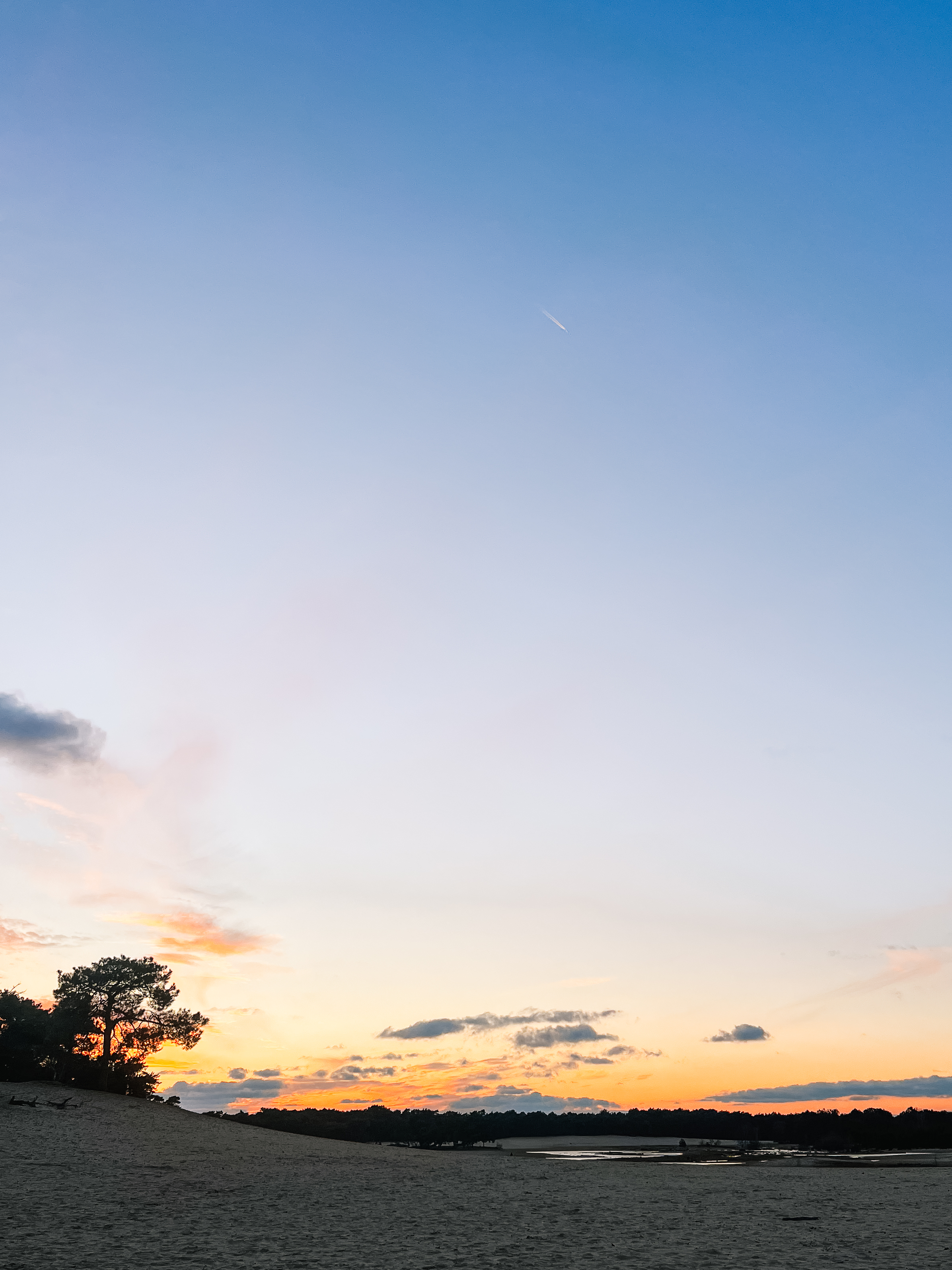These are the 10 most beautiful nature reserves in Brabant
From cool cities, cozy villages, a beautiful coastline and various nature reserves. In the largest province of the country you will also find plenty of beautiful nature, places that almost look foreign. That is why I will take you to the most beautiful nature reserves of Brabant.
Ellen van der Aa
Brabant is a paradise for nature lovers, offering a diverse landscape of forests, heathlands, wetlands, and sand dunes. Whether you're looking for a peaceful hiking trail, a scenic cycling route, or a chance to spot rare wildlife, the province’s nature reserves provide the perfect escape. From the vast sand dunes of Loonse en Drunense Duinen to the serene wetlands of De Biesbosch, Brabant is home to some of the most beautiful nature reserves in the Netherlands. Discover the breathtaking natural beauty and hidden gems waiting to be explored!
Most beautiful nature reserves in Brabant
1. Nature reserve De Moerputten - Den Bosch
To the west of Den Bosch, between the Vlijmenseweg and the Deutersestraat, lies the nature reserve De Moerputten. This park is one of the few remaining lowland peat bogs south of the major rivers. My family tipped me off to this nature park, so I went out with them for a walk. There are two walking routes through the area, marked with blue and yellow posts.
We are going for the five kilometre long yellow Bridges Route. In addition to open water and marsh, you will also find blue grasslands and fascinating flora and fauna in De Moerputten. The animal species that stands out the most is the butterfly. The eye-catcher of De Moerputten is the Moerputten Bridge. This six-hundred-metre long railway bridge is an example of industrial heritage from the nineteenth century.
 Foto's: Ellen van der Aa
Foto's: Ellen van der Aa
2. Nature reserve De Peel
Do you like bird watching? Nature reserve De Peel is one of the richest bird areas in Western Europe. This is because the landscape consists of peat bogs, fens, heathland, sand ridges and quiet woods. This makes it the ideal place for breeding and migratory birds. One of the most special birds in the Crane, although you will hear it faster than you will actually see it. The nature reserve is partly located in Limburg, in that part you will find a visitor center with much more information about the area, including walking routes. You can also rest there with a cup of coffee or lunch.
During the breeding season, part of the area is closed, but you can always take a walk on the marked hiking trails of various lengths. And perhaps you wouldn't expect it, but you can still take a walk here without meeting anyone else! By the way, there is a path in the park that is wheelchair accessible, and there is also a birdwatching point that is accessible for people in a wheelchair.
3. The Oisterwijk Forests and Fens
The Oisterwijkse Bossen en Vennen is a very unique nature reserve in Brabant. Here you will find more than 80 fens, almost all of which were created naturally just after the last Ice Age. The polar winds blew sand into hills and behind them the fens were created. Now it is a fantastic area for walking or cycling, or take a horse ride. In the nature reserve there are various routes of different lengths that are easy to follow using posts. And no matter how often I have walked the routes, every time I come here I am amazed at how beautiful it is. Especially on a clear winter day, with a layer of ice on the water or at sunrise or sunset when the forest is shrouded in an orange glow that reflects on the water.
4. Estate Huis ter Heide - de Moer
Near Tilburg you will find a very diverse nature reserve. Here you will come face to face with Scottish Highlanders and reed, song and water birds among the many heaths and fens. The name of this extensive estate is due to a country house on the grounds. Although there are various walking routes to follow, the Vennenroute is the most popular. This varied tour leads you over the boardwalk and along two viewpoints. Are you going in the warm months? Then the frogs will treat you to loud croaking concerts.
 Foto: Rudolf-Peter Bakker/Unsplash
Foto: Rudolf-Peter Bakker/Unsplash
5. Nature reserve De Maashorst
The Maashorst nature reserve consists of forests and heathlands, drifting dunes, fens, meadows and winding streams. With its 3,500 hectares, it is the largest contiguous nature reserve in North Brabant. This area also came into being after the last Ice Age. At that time, fractures in the earth's crust were pushed up. This entire area was pushed up by about 4 meters. If you walk through this area, you hardly see it, but it is special. In the landscape, you can also see stones and boulders that were deposited by the Meuse. Before the fractures in the earth's crust, it meandered through this area.
6. The Kampina
The Kampina is located next to the Oisterwijk forests and fens. Here you will find vast heathlands, narrow streams and also a number of fens such as the Belversven, the Huisvennen and the Zandbergsvennen. The heathlands are grazed by a number of cattle, sheep and horses, but you will also find spoonbills, egrets or kingfishers. In the forest and on the fields you can suddenly come face to face with a deer. The area is very beautiful for walking, from the Oisterwijk forests you can walk there. Or take the NS walk between the station of Boxtel and Oisterwijk. You will then pass through both nature reserves.
7. National Park De Biesbosch
An adventurous maze of rivers, islands, willow forests and capricious creeks with crystal clear water: that is De Biesbosch . This National Park can be found on the border of South Holland and North Brabant. It is home to the largest freshwater tidal area in Europe and the beavers.
There are several hiking and cycling routes that lead you through the green area. But the rugged nature of this swamp is best experienced from the water. I paddle silently through the narrowest creeks. Here and there I have to duck under the low branches. It gives me the feeling that I am one with nature. By seeing the tall willow forests I even forget for a moment that I am in the Netherlands.
 Foto: Paula van de Kamp
Foto: Paula van de Kamp
8. The Mastbos near Breda
The Mastbos was planted more than 500 years ago by Hendrik III van Nassau. Now the forest is also known as the backyard of Breda. You can walk straight into the forest from the city. Here you will find stately beech avenues, vast heathlands and dark coniferous forests. Staatsbosbeheer has set out various walking routes. I like to walk the Snuffelroute, which has been specially set out for walking the dog. It sniffs around a lot here.
9. De Groote Heide (The Great Heart)
Did you know that Brabant also has a nature reserve that is in the top 10 of all nature reserves in Europe? De Groote Heide is located on the Belgian-Dutch border and is incredibly beautiful. Nature managers in Belgium and the Netherlands work together here to restore the old heathlands and that produces beautiful pictures. In the area you will find many short walks, but for the adventurous there are also longer routes that run right through the entire contiguous area. I haven't been there myself for a while, but now that I think about it, I should go there again soon. Nothing more fun than a weekend of wandering along the border!
10. Loon and Drunen dunes
Last but certainly not least: the Loonse and Drunense Dunes. This area is located a bit west of the Moerputten and is also called the Sahara of the Netherlands. I understand that, because here you will find sand dunes as far as the eye can see. After a rainy period, small pools form between the dunes, which only make the whole picture more beautiful.
The area is 3,500 hectares and you can walk right through the dunes. This way you can trudge through the sand and view the entire area from a distance from various dunes. The area also has a number of routes for horse riders and paved paths for cyclists. There are also opportunities to cross the dunes with a mountain bike. A big challenge, but a very beautiful one!

I can imagine that you, like me, prefer to have the areas all to yourself: for the peace, the experience and the photos. The solution for this is the Brabantse drukkemeter. Here you can see online in advance how busy it is.
Curious about more inspiration for the region of North Brabant? Read our Bravant Travel Guide
Create your own blog
Easily add stories to your diary in our online editor or app
Add your images and choose your pages layouts
Share your journey in real time without the fuss!





